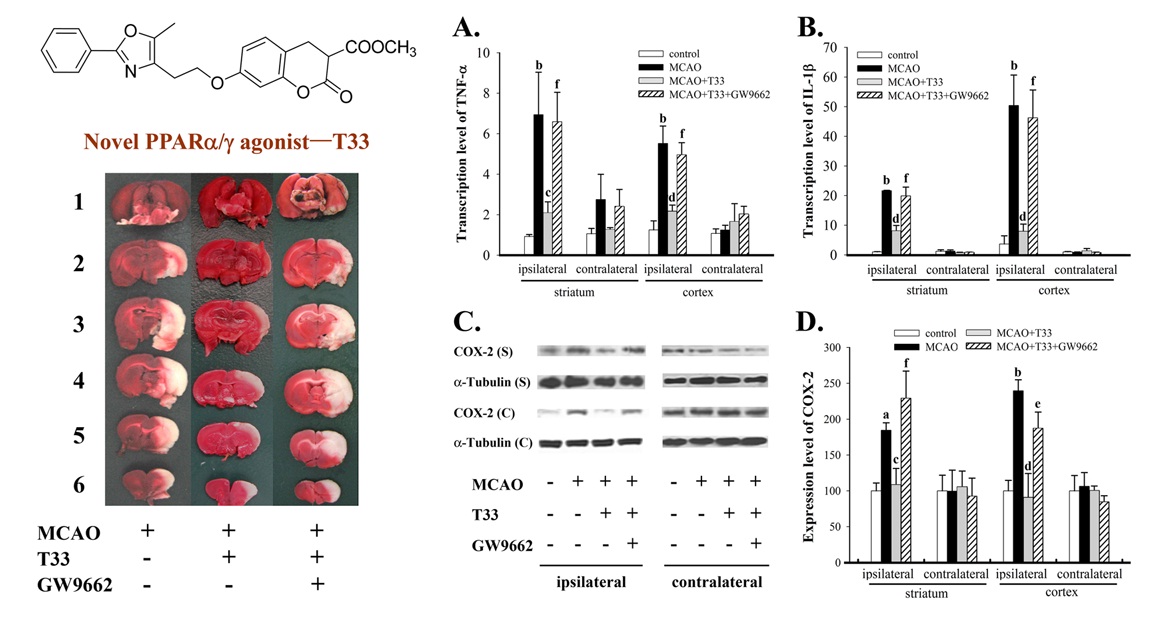
Ischemic stroke is typically characterized by the sudden onset of cerebral blood circulation dysfunction. Up to now, intravenous tissue plasminogen activator (tPA) is the only approved treatment for ischemic stroke by FDA. Its administration allows the initiation of tissue reperfusion in a few minutes by promoting clot dissolution, but it can neither ameliorate the initial severe damage of the ischemic insult nor repair infarct sizes. Consequently, there is an urgent need for novel neuroprotective drugs that could be applied in ischemic lesion development.
Through the cooperation between Prof ZHANG Haiyan and Prof YANG Yushe, both from State Key Laboratory of Drug Research, Shanghai Institute of Materia Medica, Chinese Academy of Science (SIMM), a novel PPARα/γ dual agonist—T33 has been demonstrated to reduce the infarct sizes of cortex and striatum caused by ischemia effectively. In addition, T33 also shows strong anti-inflammatory effects in acute ischemic model and ischemic core and penumbra model in vitro.
The anti-inflammatory effects of T33 may be mediated by activating NFκB and p38 signaling pathway, and researchers hypothesized that activating PPARγ might play an important role in the anti-inflammatory effects and neuroprotective activity. The present study demonstrated PPAR could become a new drug target in stroke and provided crucial clue for further drug development of ischemic stroke.
This research was funded by the National Science Foundation of China and the National Science & Technology Major Special Project for "Major New Drugs Innovation and Development" of China. Result has been published on September in Acta Pharmacologica Sinica (2011; 32: 1100-1108)
Full Text: http://www.nature.com/aps/journal/v32/n9/full/aps201169a.html
 |
| Neuroprotective and anti-inflammatory effect of T33 in rats subject to MCAO. Upper left panel: T33 structure; Lower left panel: T33 reduces cerebral infarct; (A) T33 alleviates the mRNA level of TNF-a in ischemic striatum and cortex. (B) T33 alleviates the mRNA level of IL-1b in ischemic striatum and cortex. (C, D) T33 reduced the protein level of COX-2 in ischemic striatum and cortex.(Image by SIMM) |

86-10-68597521 (day)
86-10-68597289 (night)

52 Sanlihe Rd., Xicheng District,
Beijing, China (100864)

